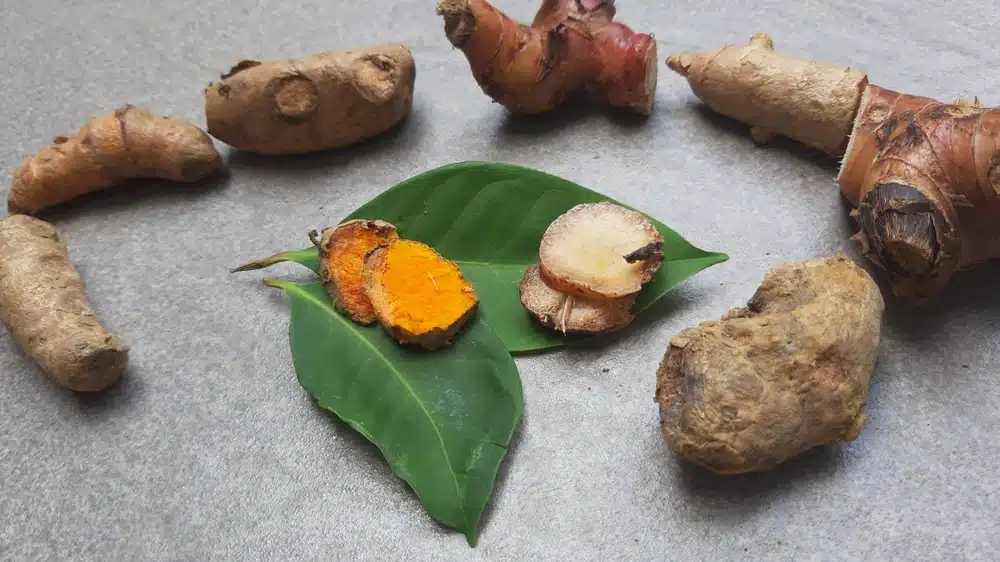As announced in our recent post, we’re embarking on a blog series exploring different dietary factors that contribute to an anti-inflammatory diet. This article will focus on the benefits of Zingiberaceae (Zin·gi·ber·a·ce·ae )—how this family of spices reduces inflammation and offers other benefits. As always, when considering how food and diet can affect your health, please consult your physician before making any changes!
Tell me more about zing…zingiber…Spices! Tell me more about spices!
Zingiberacea is a class of spices that includes ginger, turmeric, and cardamom. In addition to being a delicious way to add depth and complexity to your food, numerous studies have linked these spices with anti-inflammatory effects. Evidence-based benefit has been shown for rheumatoid arthritis, inflammatory bowel disease, heart disease, and more. Animal studies are showing promising links between these spices and a reduction in the risk of Alzheimer’s, Parkinson’s, and dementia. Let’s take a deeper look at the main spices that fall into this anti-inflammatory category.
Ginger is a plant native to parts of Asia, including China, Japan, and India. The spice that’s in your pantry comes from the underground root portion of the plant, also known as the rhizome. In many Eastern medicine practices, ginger has played a prominent role in health for over two thousand years. A study1 performed in Ireland was able to assess the health benefits of ginger and pinpoint the compound in the spice that was most likely responsible for its anti-inflammatory benefits: 6-Shagoal. This compound is possibly the reason additional studies have shown that ginger has the potential to mitigate the effects of degenerative, digestive, and cardiovascular disorders, and can affect how the body ages.2
Turmeric is a plant primarily grown in India. It is the primary spice in a curry. In that region, it has long been used in Ayurvedic and other traditional Eastern Asian medicinal practices. It has been determined that the Curcumin present in turmeric is likely what provides its health benefits, which include traditional treatments for skin disorders and issues in the upper respiratory tract, digestive system, and joints. However, turmeric and curcumin suffer from low-bioavailability3—this means that your body doesn’t easily absorb them in small doses or without some form of carrier assistance. To make the most of your turmeric intake, combine the spice with black pepper or a meal with high-fat elements.
Cardamom is a spice that originated in India but now is primarily grown in Guatemala. It comes in multiple varieties with different flavor profiles and can be used in pod form, seed form, or ground into powder. A 2009 study4 found that cardamom is particularly beneficial in cardiovascular health, and can significantly lower blood pressure with minimal to zero side effects. It is becoming increasingly clear in the medical community that certain types of inflammatory response are mitigated by antioxidants5—this is an area where cardamom has the potential to shine in an anti-inflammatory effect. Cardamom is full of antioxidants, including flavonoids and vitamin C.
Delicious and nutritious?? Are zingiberecea spices a unicorn??
No, and you shouldn’t be eating unicorns anyway. But if you want to get a nice, healthy dose of anti-inflammatory spices with a lot of complex flavor, here are some recipes you can make using ginger, turmeric, and cardamom!
Ginger and Turmeric Aromatic Rice
We hope you enjoyed learning about these tasty players in the anti-inflammatory diet, and we look forward to our next session, when we’ll learn all about Alliums!
Did you miss our other articles in this series?
Article references:
- Comparative antioxidant and anti-inflammatory effects of [6]-gingerol, [8]-gingerol, [10]-gingerol and [6]-shogaol – PubMed (nih.gov)
- Anti-Oxidative and Anti-Inflammatory Effects of Ginger in Health and Physical Activity: Review of Current Evidence – PMC (nih.gov)
- The anti-inflammatory activity of curcumin is mediated by its oxidative metabolites – PubMed (nih.gov)
- Blood pressure lowering, fibrinolysis enhancing and antioxidant activities of cardamom (Elettaria cardamomum) – PubMed (nih.gov)
- Inflammation, free radicals, and antioxidants – PubMed (nih.gov)


